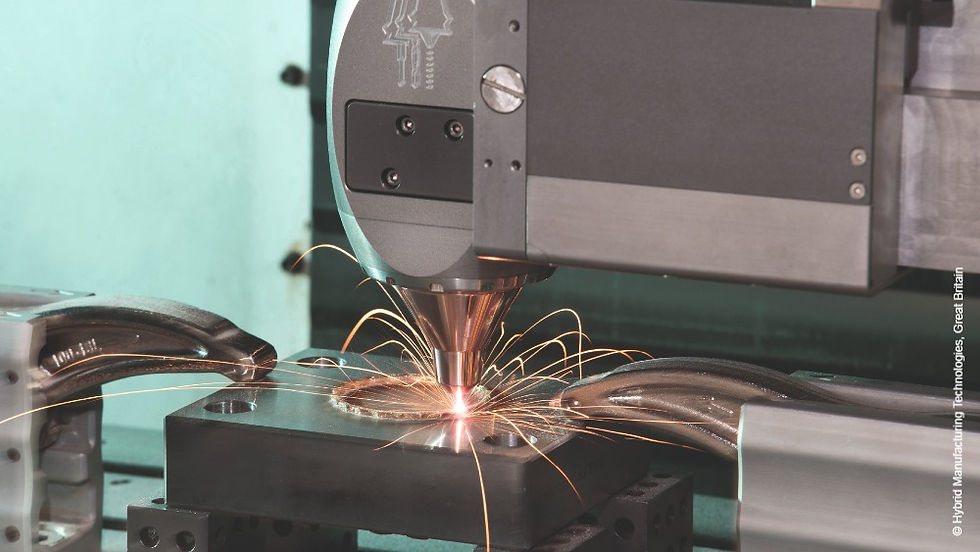Fully Integrated Automation Streamlines Additive Manufacturing Machinery
- Paxton Shantz

- Apr 18, 2022
- 3 min read
For the best additive solution, take a subtractive approach to your controls hardware

It’s been a guiding principle for ages in the IT industry and it’s the dominant philosophy of global semiconductor suppliers like Intel: hardware consolidation is the best way to reduce costs and expand functionality in all kinds of computerized equipment. As the power of CPUs dramatically expands with multi- and many-core processor offerings, so too does the ability to do much more work on one feature-filled device.
This is plainly obvious to any user of modern PCs and mobile devices, but it’s not always conventional wisdom for industrial applications that require automation and controls equipment. In that realm, a more traditional approach lingers where separate, dedicated hardware devices like PLCs, motion controllers and PCs for HMI often work side-by-side with other single-purpose black boxes that each handle their own very specific function. Sure, this kind of architecture can get the job done, but at a high cost. These control architectures are riddled with weak spots: large equipment footprints, excessive cabling, communication challenges between devices from different vendors, complex software management – you name it.
PC Control technology erases inefficiencies
Of course, there is a better way – I wouldn’t be writing this blog if there wasn’t! The ironic thing is that it’s not even a new controls philosophy we’re talking about, but one that has been steadily winning acceptance and market share since the early 80s – PC-based control. Just like cleaning up the excess structural material on a 3D printed part in post-processing, PC Control cuts the clutter out of automation technology. From a Beckhoff perspective, the approach is as simple as it is ingenious. One software platform, TwinCAT, simplifies software management by providing an all-purpose engineering environment and runtime for all aspects of automation for all controller hardware in the Beckhoff portfolio.
Fully integrated automation leads to a wide range of benefits for additive manufacturing equipment, including reduced software costs for wide-ranging functionality in one platform, a free engineering environment, free customer support, no renewal fees, simple licensing and easy migration up or down from one controller type to the next. Software and code revisions are also made much easier with the help of Source Control Management that uses Microsoft Visual Studio as a framework – it’s built right into the TwinCAT engineering environment.
TwinCAT covers your “traditional” control functionality such as PLC, motion control and HMI and extends to all manner of advanced functionality, such as IoT and cloud connectivity, edge computing, sophisticated temperature control, advanced measurement, condition monitoring, predictive maintenance, safety, integrated cameras (vision, thermal, profilometer), touch probes, and more. Powerful Industrial PCs with those multi- and many-core CPUs mentioned earlier have all the computational horsepower needed to run all those functions on one highly flexible device.
Everything in its right place
Think of all the devices you can get rid of now. Suddenly, the space needed for your controls equipment has plummeted, and you can say goodbye to some electrical enclosures to boot. It’s important to consider how many fewer potential points of failure you have when you standardize on a PC-based controls architecture.

A leading Industrial PC manufacturer like Beckhoff can assure long-term availability of reliable PC-based control hardware. While Intel, AMD and ARM introduce new processors continuously, Beckhoff makes sure that the CPUs we source are guaranteed to have a long lifecycle for industrial applications and secure an appropriate stock to provide a continuous supply for 10 or even 20 years depending on the device. Devices that are even older than that can still receive service and repair from Beckhoff. This boosts reliability and greatly reduces the demands on technical support and maintenance in the field.
Even in the mundane you can save money. There is the potential to eliminate all manner of cables and connectors just by subtracting the number of controls devices from your architecture. Taking this several steps further, Beckhoff even offers many One Cable Technology and One Cable Automation solutions for the devices that remain, combining power and communication in one cable. It’s kind of like Power over Ethernet (PoE), but on an industrial scale for everything from sensors and actuators to servomotors and even robots.
By consolidating all these efficiencies, manufacturers of additive manufacturing equipment can ramp up their speed, agility and accuracy advantage: faster time to market, easier commissioning and an overall better machine for the end user. It’s time to stop letting your over-crowded and complicated control cabinet drag you down.
Are you ready to cut the clutter and clean up your automation architecture? Contact your local Beckhoff sales engineer today.

Paxton Shantz is the Digital Manufacturing Industry Manager for Beckhoff Automation LLC.



Comments